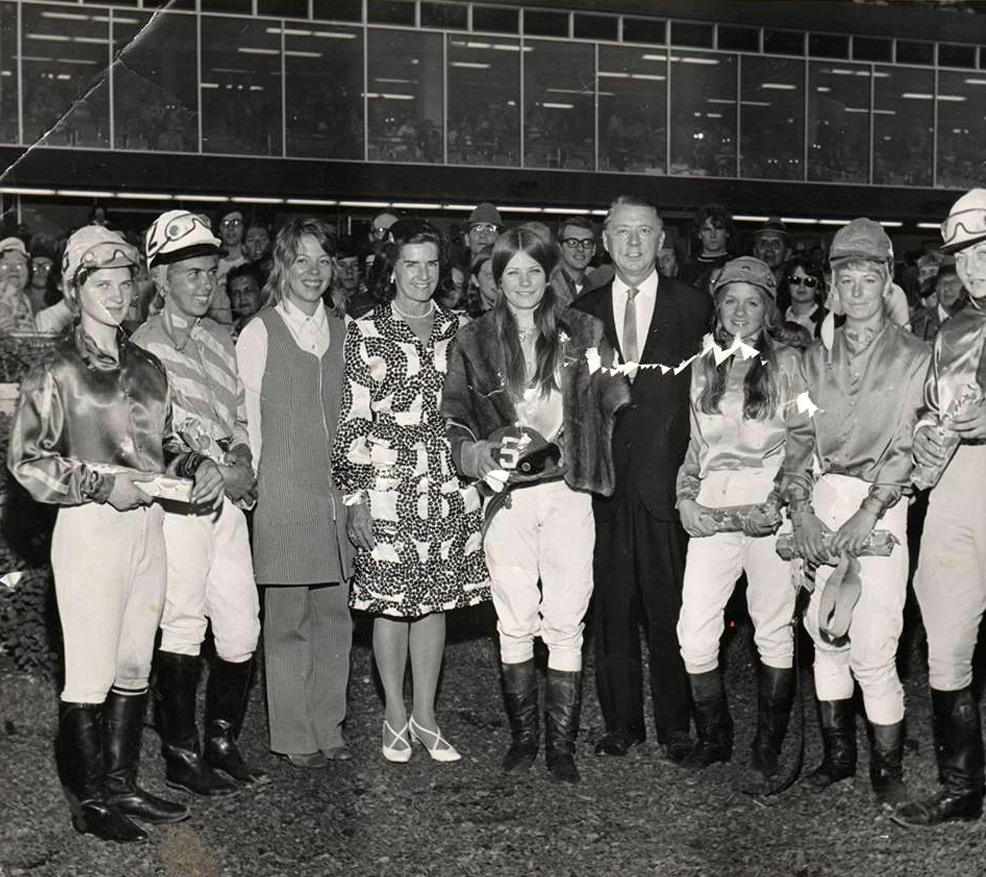
1971 Powder Puff Derby winner Karen (Chysyk) Hendricks (center). Runner-up Joan Phipps to the right of Jack Hardy.
by Bob Gates
The 1970s were a special time for the Sport of Kings. The decade bragged of its three Triple Crown winners Secretariat (1973), Seattle Slew (1977) and Affirmed (1978).
Secretariat's sweep of the Kentucky Derby, Preakness and Belmont Stakes ended a 25-year drought which saw racegoers thirsting for a champion to conquer America's triad of the turf. The popularity of horse racing went through the roof as the quest for Triple Crown winners became all consuming.
The 10-year span of the 1970s Triple Crown races provided the three Triple Crown champions above and some "close calls" with Canonero ll and Spectacular Bid winning the first two jewels but falling short in the Belmont. Bold Forbes and Riva Ridge each won the Derby and Belmont but missed the Preakness. Little Current came up short in the Derby but proved much the best in the final two legs of the Triple Crown.
Fifty years ago, the Downs celebrated its 14th season of operation. The 1971 season was a 56-day meet that ran from May 7 to August 9. While it was not particularly eventful year, there is a certain allure to a 50-year span. So we succumb to the charm of the half-century mark and check out the happenings of the Downs in 1971.
While they may not all be milestone moments, they are special memories. Some names you may not remember and others you may not have heard in a long time. So, like the late Downs' trainer Mike Smith would say, "pitter-patter let's get atter!"
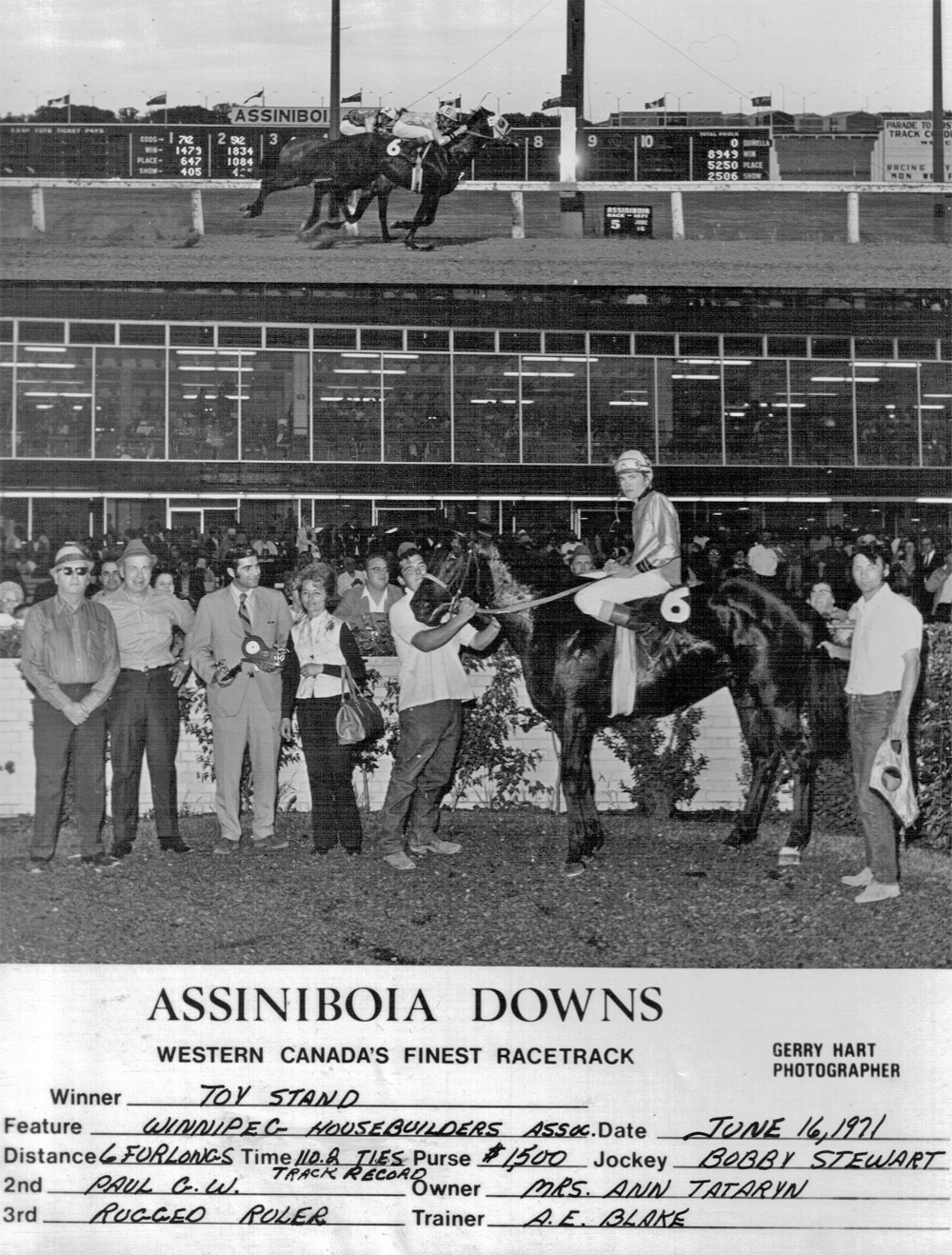
Toy Stand equals six-furlong track record at Assiniboia Downs. June 16, 1971.
February 18: Horse racing returned to Whittier Park in the form of a winter harness meet put on as part of the Festival du Voyageur Winter Carnival. The 9-day meet saw horses from western Canada, Wisconsin and Minnesota race on a snow-packed oval. It had been 30 years since horses last raced at the St. Boniface track.
May 7: The feature race on opening day was the 14th running of the $5,000 added Inaugural Handicap. The race saw front-running favourites Spanish Key and Rangatira getting caught at the wire by a fast closing 6-year-old mare, Meadeland who paid $83.10 to win.
May 8: Elman Guttormson, the Free Press handicapper, had a reputation for being the tops in his field. On the second day of racing he picked seven of the eight winners in his Graded Selections. We miss you Elman!
May 21: Twin brothers Larry and Jerry Rettele rode horses in the 7th race. It was the first time twin jockeys had ever ridden at the Downs.
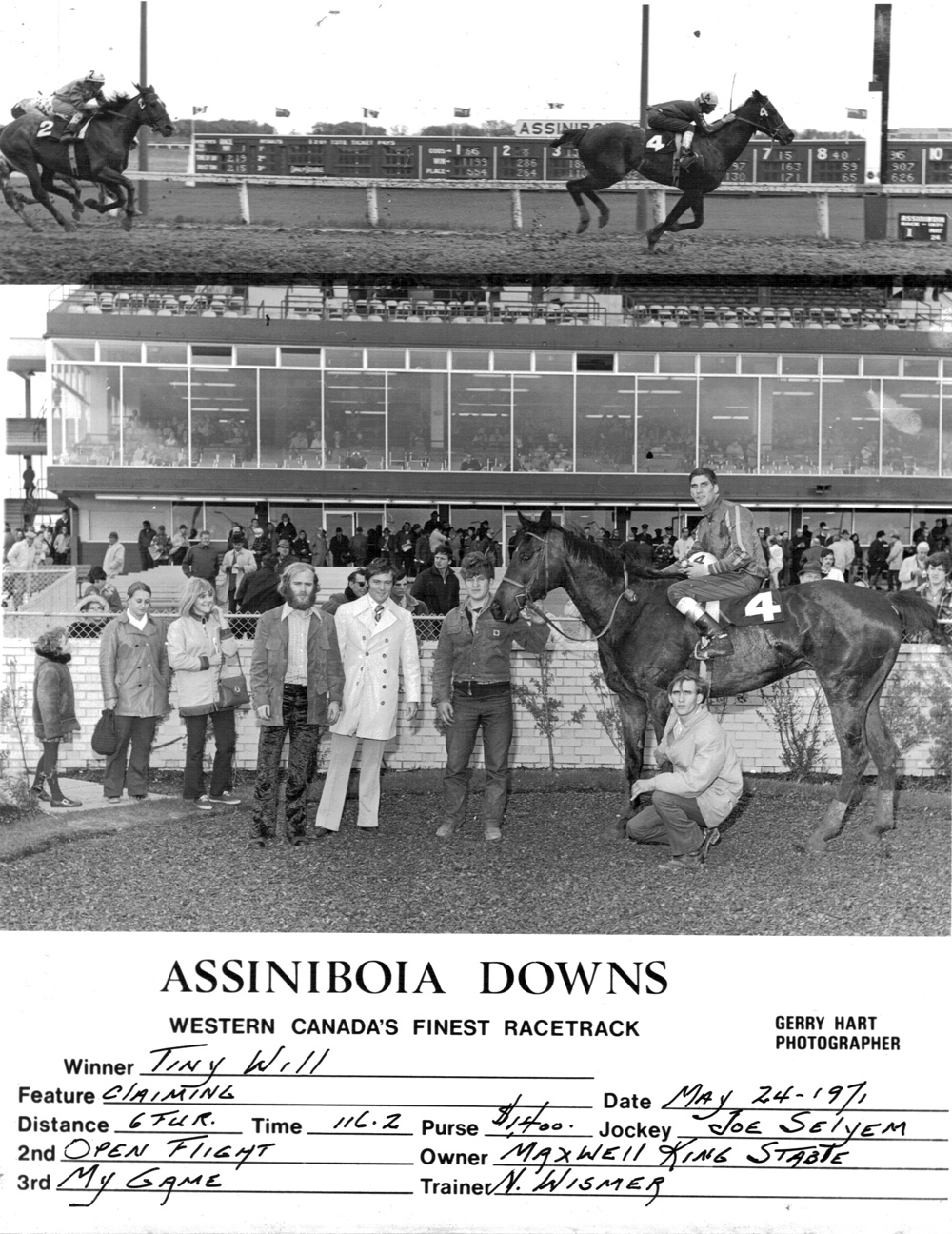
Brandon's Norm Wismer saddles the second winner of his budding career. Joe Selyem up. May 24, 1971.
May 24: Brandon's Norm Wismer saddled the first winner of his budding career. His Haydns Secret won the 2nd race on the Saturday card. On holiday Monday the youthful conditioner got his second win when Max Freed's 11-year-old Tiny Will showed he still had what it takes.
June 16: Jockey Bobby Stewart rode a record six winners on the 8-race card. Bob's effort bettered the previous mark held by Dick Armstrong, who rode five winners on July 18, 1965. Lost in the hoopla of Stewart's feat was the performance of his mount Toy Stand in the 5th race. The 5-year-old stallion, owned by Ann Tataryn equaled the 6-furlong track record (1:10 2/5) set by Mazur on September 19, 1958.
June 28: Jockey Eddie Werre rode three winners and had a second-place finish on the 8-race card. What made his night special was that he figured in all four featured mutuel pools, the Daily Double and all three Quinellas.
July 1: Hillside Farm's Prince Robby dominated the 2nd Running of the J.W. Sifton Memorial Stakes. His jockey, Bobbie Dimma, booted home four winners and yes, "Bobbie" is how Dimma's name appears on his birth certificate.
July 2: Karen Chysyk (Who? Most probably know her as Karen Hendricks.) won the Power Puff Derby aboard Polly Note. Finishing second in the race, riding Channing, was Joan Phipps.
July 23: Five lucky fans held winning Daily Double tickets on the combination of #6 Royal Jerry and #10 Seek the Glory. Each was worth a record $4,235.50! The payout beat the previous record, which had been set a month earlier on June 14th when the #9 Castle Lane and #4 Immortal Age Daily Double paid $3,281.00.
August 8: Kenny "Hank" Hendricks, 22-year-old saddlesmith recorded his first win in the Gold Cup aboard "Cinderella" horse Windsor Moon. Hank would continue to dominate the race and win a record-setting seven Gold Cups.
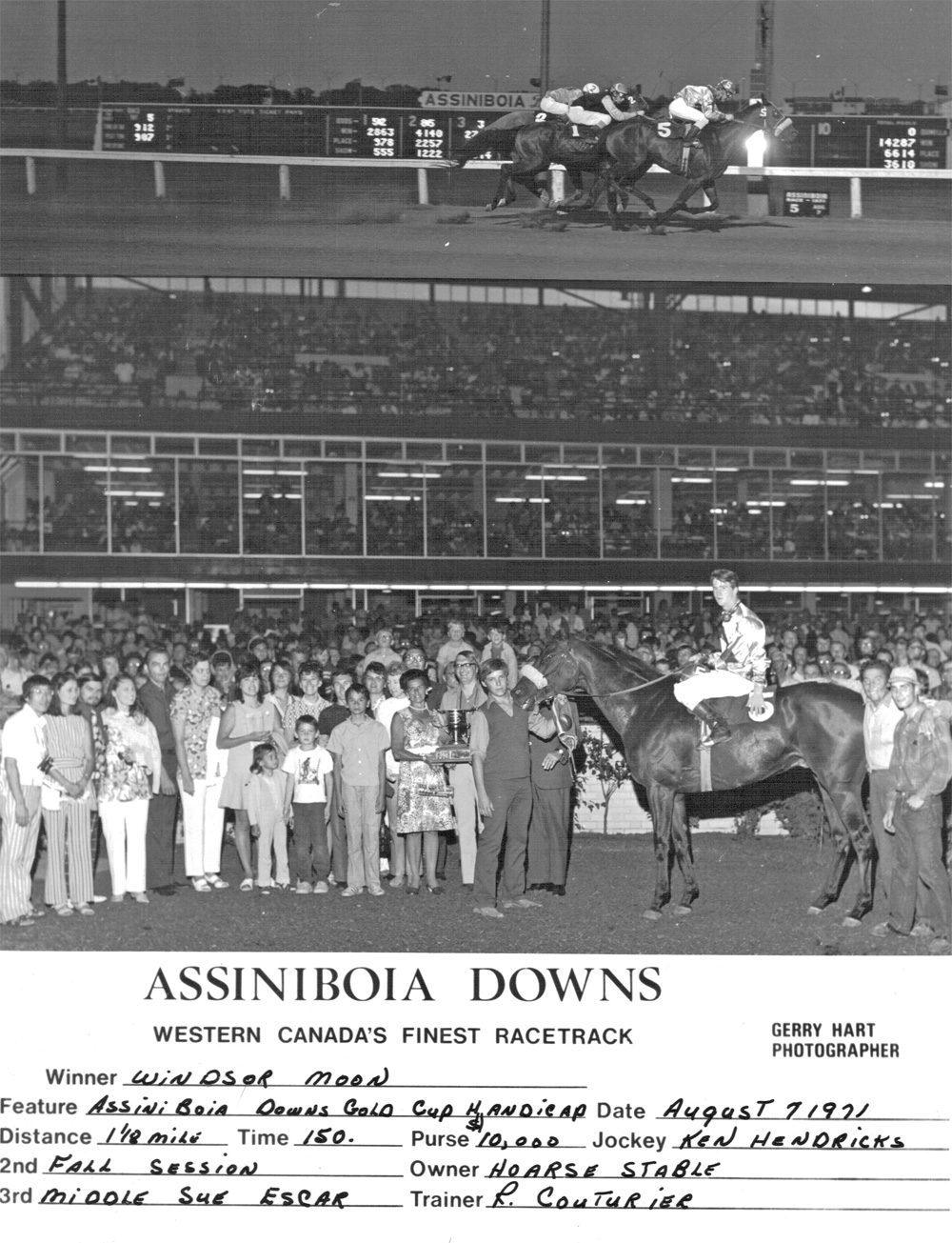
August 9: The 1971 season came to a close. Bob Stewart was the leading rider, while South Sioux City Nebraska's John Gray was the top trainer. The handle for the 56-day meet was $9.8 million and the attendance was just shy of 200,000.
August 13: The 45-day harness meet celebrated its opening day with racing scheduled to run until October 26.
It’s hard to believe that a half-century has past since these events filled the sports pages of the Free Press and the now defunct Tribune.
The 1970s weren't just about Triple Crown winners and near winners. Nope, there was a remarkable horse who monopolized handicaps across the U.S. from 1974 to 1977. His name? Forego!
A multiple graded stakes winner, Forego was named Horse of the Year in 1974, 1975 and 1976 and Champion Older Horse in 1974, 1975, 1976 and 1977. From 1974 to 1977, Forego won 24 of his 37 starts and earned $1.8 million. His record is even more impressive considering he was routinely high-weighted, carrying between 130 and 138 pounds in his races. Interest in racing grew to new heights throughout the decade with Forego playing a significant role.
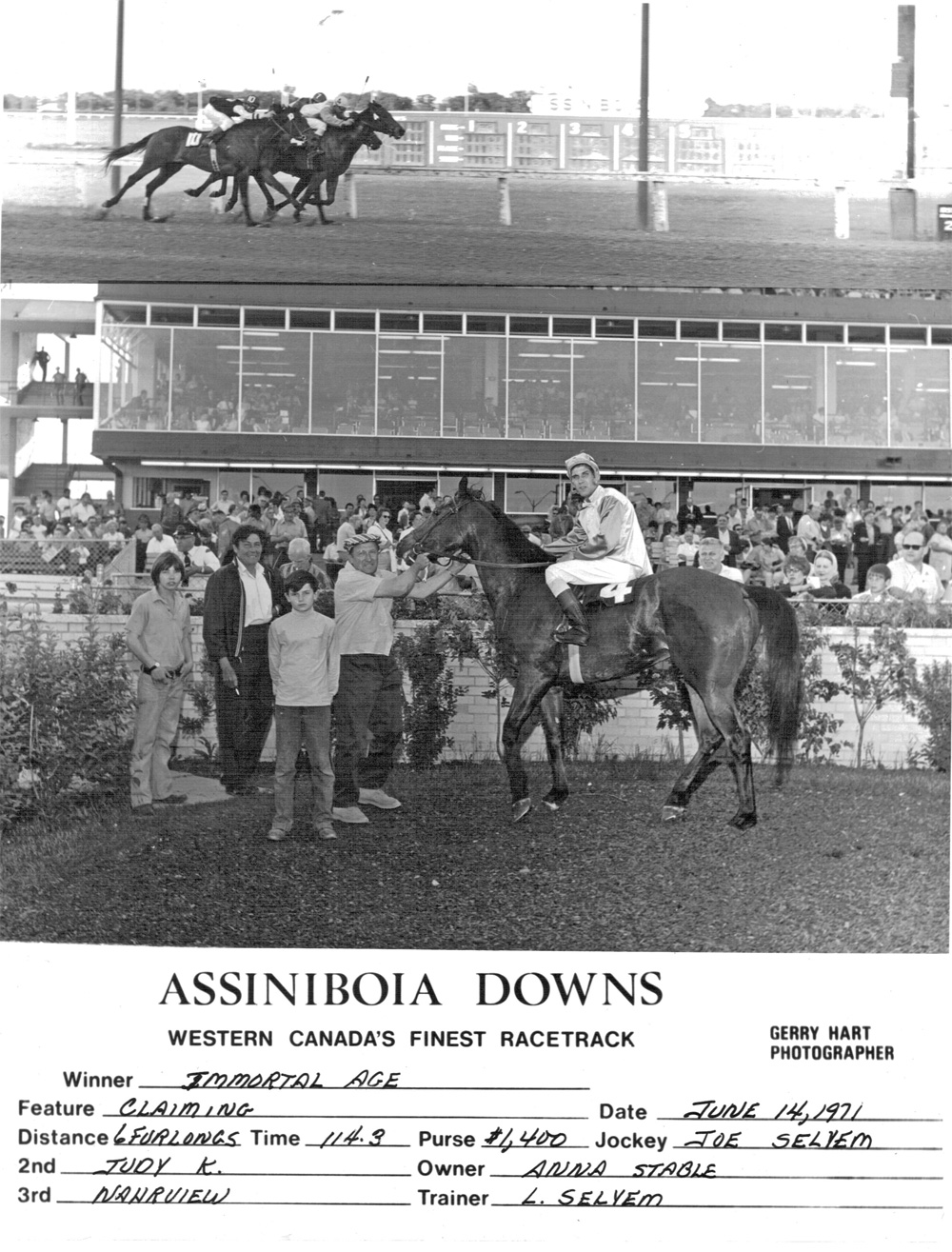
Immortal Age completes second half of record Daily Double at ASD. $3,281.00! June 14, 1971. Joe Selyem up.
Like other racetracks, Assiniboia Downs rode the wave of horse racing's popularity. It was like a fever that spread throughout North America. The 1970s were special and 1971 at the Downs was quite a year.
The Downs may not have had a Forego, but we had our share of local racing stars. Some had two legs, others had four, but they were all responsible for creating the indelible memories that contributed…
To the fun we had in ‘71!


